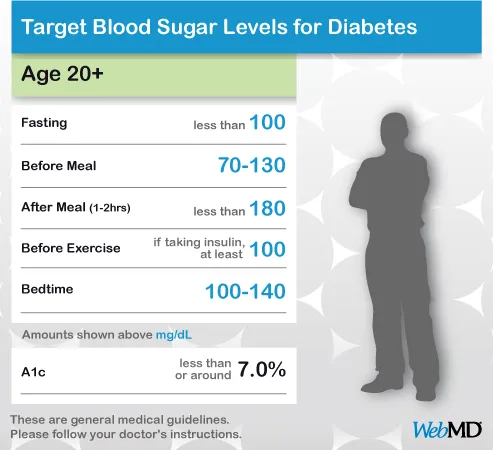Normal Blood Sugar Levels for Adults With Diabetes

Normally, your pancreas releases insulin when your blood sugar, or “blood glucose,” gets high -- after a meal, for example. That signals your body to absorb glucose until levels get back to normal.
But if you have diabetes, your body doesn’t make insulin (type 1 diabetes) or doesn’t respond to it normally (type 2 diabetes). That can leave your blood sugar too high for too long. Over time, that can damage nerves and blood vessels and lead to heart disease and other problems.
If you have diabetes, your doctor may ask you to keep track of your blood sugar by testing it at home with a special device called a blood glucose monitor or home blood sugar meter. It takes a small sample of blood, usually from the tip of your finger, and measures the amount of glucose in it.
Follow your doctor’s instructions about the best way to use your device.
CONTINUE READING BELOW
- What medication and dosage you took
- What you ate, when you ate, or whether you were fasting
- How much, how intense, and what kind of exercise you were doing, if any
That will help you and your doctor see how your treatment is working.
Tight blood sugar control, however, means a greater chance of low blood sugar levels, so your doctor may suggest higher targets.




